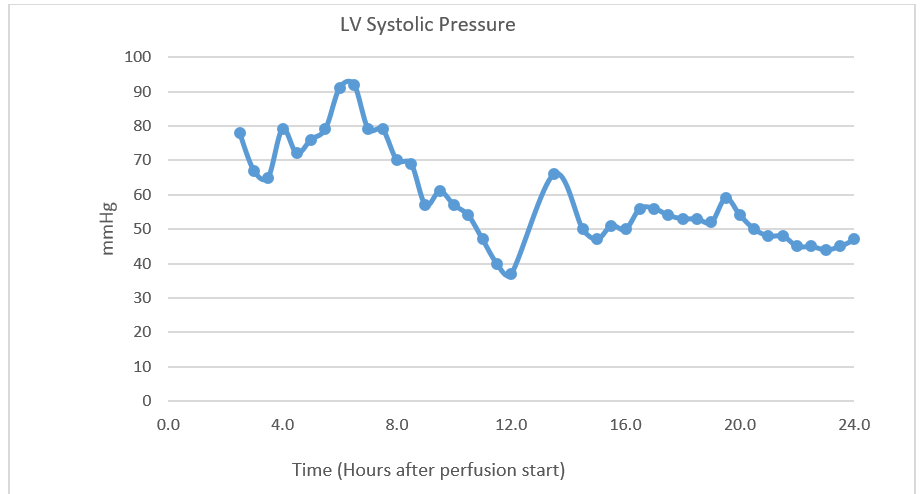J. T. Church1, K. B. Deatrick1, J. P. Phillips1, J. McLeod1, C. Douglas1, A. Rojas-Pena1, R. H. Bartlett1, M. L. Bocks1, G. E. Owens1 1University Of Michigan,Ann Arbor, MI, USA
Introduction: Prolonged normothermic ex-situ heart perfusion (NEHP) could revolutionize cardiac transplantation by prolonging preservation times and allowing assessment of pre-transplant organ function. Several groups have reported preservation of porcine hearts by this method for 8-12 hours. However, neither 24-hour preservation via NEHP nor 12-hour preservation followed by successful transplantation has been reported in the literature. Here we report successful preservation of a porcine heart for 24 hours, as well as for 12 hours followed by successful transplantation, through NEHP with live paracorporeal animal plasma cross-circulation.
Methods: Porcine hearts from healthy adult swine were procured and attached to a circuit consisting of a reservoir, roller pump, and membrane oxygenator, and perfused with donor blood-based perfusate via the aortic root for antegrade coronary perfusion. A second healthy adult paracorporeal pig (PP) was placed under anesthesia with cannulation of the jugular and femoral veins for creation of a veno-venous shunt for plasma filtration. Plasma was cross-circulated between the PP and heart reservoir at 1L/hr. The primary measure of cardiac function was left ventricular (LV) systolic pressure at a set diastolic pressure of 10mmHg. In experiment one, perfusion was continued for a goal time of 24 hours. In experiment two, perfusion was continued for 12 hours, after which the perfused heart was transplanted into a healthy adult pig recipient via normal orthotopic heart transplantation techniques. Successful transplantation was defined as resumption of transplant heart contractility and the ability to wean from cardiopulmonary bypass (CPB) in the recipient pig.
Results: In experiment one, 24-hour NEHP preservation was achieved while maintaining regular electrical activity and contractions in the donor heart. Maximum left ventricular (LV) systolic pressure was 92mmHg, and was 47mmHg even after 24 hours of perfusion. The donor heart remained responsive to 0.1mg ephinephrine at the 24-hour time point, with an increase in LV systolic pressure to 196mmHg. In experiment two, the donor heart was successfully supported for 12 hours, with maximum LV systolic pressure of 97, and an LV systolic pressure of 40 at 12 hours. Following orthotopic transplantation, spontaneous cardiac contractility was achieved and the recipient was weaned off CPB, generating a blood pressure of 97/48 with inotropic and vasopressor support.
Conclusions: Successful 24-hour NEHP of a porcine heart, and 12-hour NEHP with subsequent successful transplantation, are possible using a model of NEHP that incorporates plasma cross-circulation from a live paracorporeal pig at 1L/hr.
